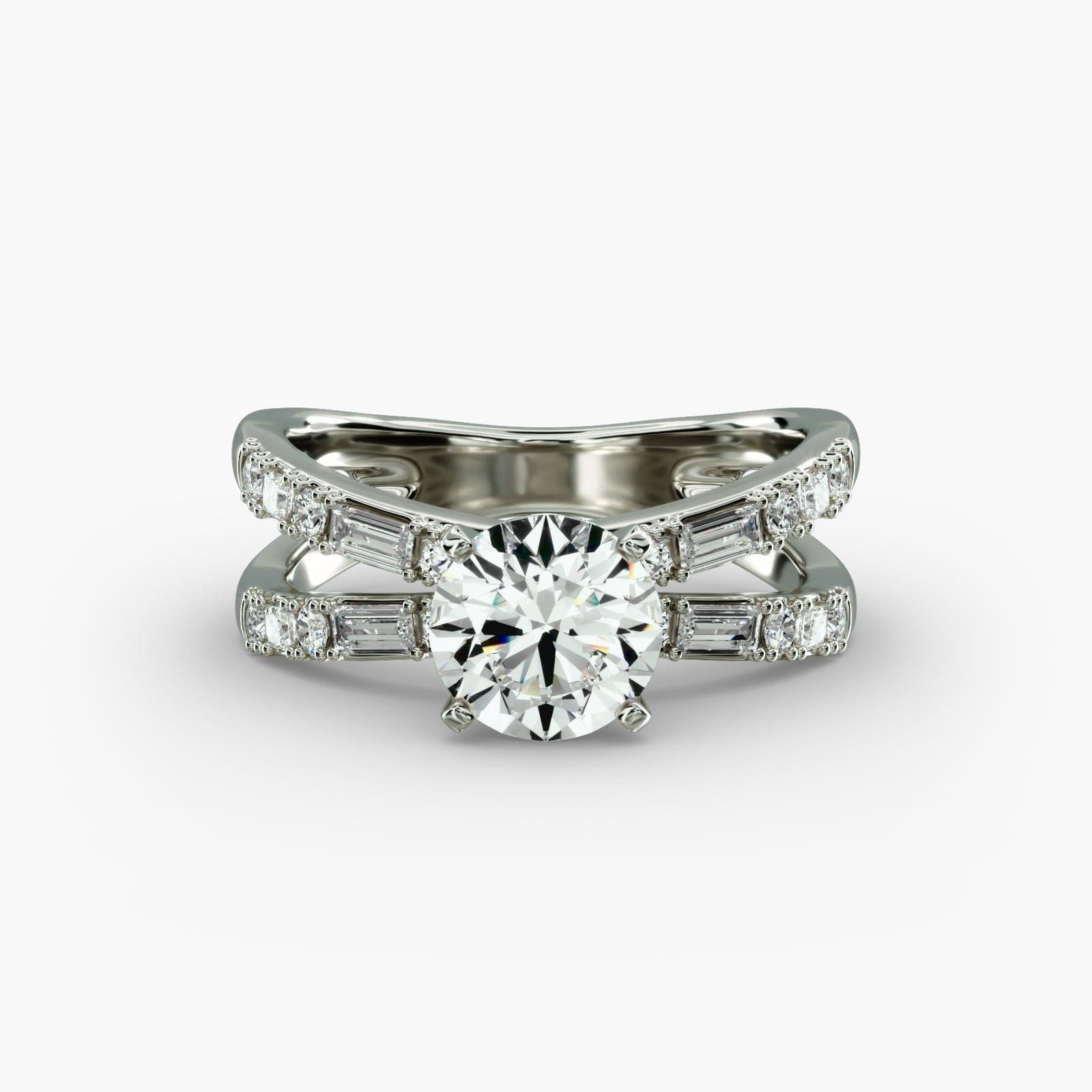What Is the Best Engagement Ring Setting for a 2 Carat Diamond?
1 Minute Read
By Emily Frontiere, updated on
An engagement ring featuring a two carat diamond is a bold and beautiful choice! When selecting the style of your setting, here are a few pointers about wearing a gem of that size.
- Halo - Two carat diamonds make a big statement, but their impressive dimensions do leave them vulnerable to impacts. One of the best ways to protect the outer edge of your diamond is to choose a halo setting. By surrounding the featured diamond with metal and other gems, you greatly decrease the chance of your diamond being harmed by an unlucky hand gesture.
at Blue Nile
- Low Profile - The solitaire engagement ring style which shows a single diamond set above a plain band has been used by innumerable to-be-weds since its debut in the late 1800s. While this is certainly a classic look, it may not be practical for two carat diamonds as they will sit so high on your finger that they may snag on something. A setting which sets your stone into the band rather than above it will help prevent this from happening.
at Blue Nile
- Split-Shank - Two carat diamonds are heavy and may cause your ring to swing around your finger. To help keep your ring in place, a split shank offers some stability.
at Blue Nile
- Protect those points! - If your two carat diamond is a shape that has a point, like pears or hearts, that point has the highest risk of damage. Look for settings that have robust prongs or bezel settings. Another option are East-West settings which orient your diamond so that length of the stone crosses your finger.
at Blue NIle
Emily Frontiere
Emily Frontiere is a GIA Graduate Gemologist. She is particularly experienced working with estate/antique jewelry.
Related Articles
20 Best Mother’s Day Jewelry Gift Ideas for 2025
What comes to mind when you think about your mother? For many of us, memories of love, good times and...
Read More
Buying Guide for 2023: Diamond Chandelier Earrings
What Is a Chandelier Earring?
What exactly IS a chandelier earring? People typically think of chandelier earrings as these large,...
Read More
What Is Rose Gold?
Rose gold is a gold alloy that has a warm, pinkish hue and is made from mixing pure yellow gold,...
Read More
Buying Diamonds Online? Match Your Shopper Personality Type to an Online Store
How can you find the right website when you’re buying diamonds online? See which of these diamond websites matches your...
Read More
Latest Articles
800 Years of Mogok: A Celebration in Tenuous Times
As Mogok, Myanmar prepares to celebrate its 800th anniversary, the inhabitants of this prolific gem producing region face an uncertain...
Read More
What is the Average Gemstone Faceting Yield?
What’s the average gemstone faceting yield from a single piece of rough? Learn how to estimate how much material you’ll...
Read More
Pyroxmangite Value, Price, and Jewelry Information
Pyroxmangite grains are rare, seldom clean enough to facet, and difficult to cut. However, when cut, they are extremely beautiful...
Read More
How to Identify Emerald Simulants and Synthetics
Gemologists can separate natural emeralds from emerald simulants and synthetics. Learn about the most common tools and techniques for this....
Read More
Never Stop Learning
When you join the IGS community, you get trusted diamond & gemstone information when you need it.
Get Gemology Insights
Get started with the International Gem Society’s free guide to gemstone identification. Join our weekly newsletter & get a free copy of the Gem ID Checklist!
